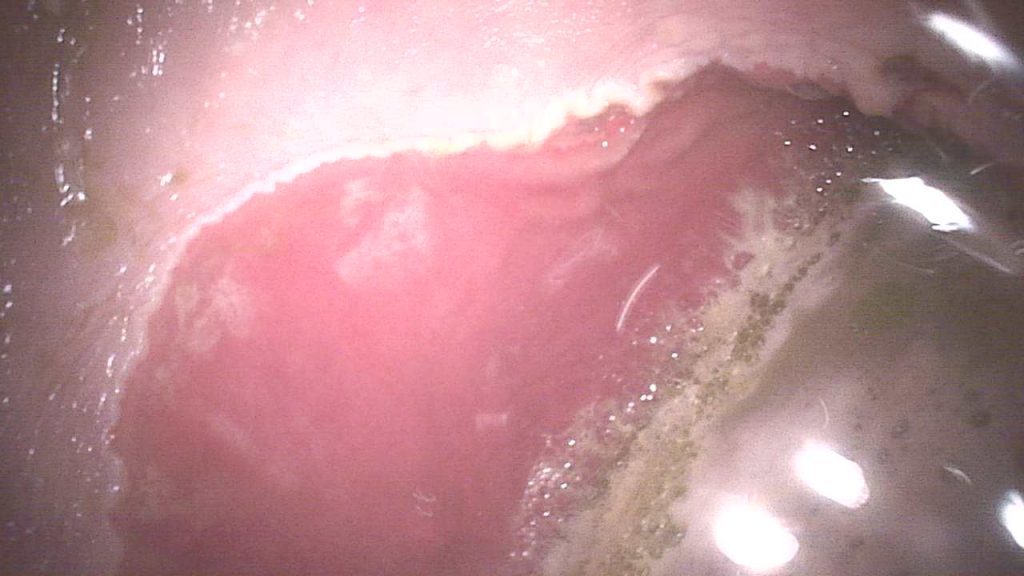We’re sure many of you will know a horse that has had gastric ulcers in the past, but what is actually going on?
There are two broad regions of the horse’s stomach; the squamous region and the glandular region. The squamous (non-acid-producing) region sits at the top around the entryway from the oesophagus (food pipe) to the stomach, whereas the glandular (acid-producing) region sits below.
There is a visual separation between the two regions formed by a line known as the Margo plicatus. The images below show the shape of the stomach, and the views we see on the inside.

Equine gastric ulcers can affect either the squamous region (most commonly seen around the margo plicatus), or the glandular region (most commonly seen around the pylorus (exit)), or sometimes both at the same time.
Clinical signs are non-specific and vary from horse to horse, but can include:
- Poor performance
- Behaviour changes, including aggression around girthing or grooming
- Poor coat quality
- Weight loss
- Recurrent colic
So how do we diagnose gastric ulcers?
If you suspect your horse may have gastric ulcers, have a chat with one of our vets.
There is a test we can run before jumping to the expense of a gastroscope, to decide whether we use a gastroscope or not. This is a simple stable side test that allows us to make the right decision for you and your horse or pony.
What does a gastroscope involve?
A camera is passed up the horse’s nose, down the throat and to the stomach. We sedate the horse so it doesn’t feel the stress of the camera passing. This allows us to have a really good look around and identify any areas of concern. It’s really important that horses are starved for between 2 and 14 hours before hand to allow us to see the linings of the stomach clearly.
Gastroscopy can be performed at your yard with our portable set-up, so no need to worry about transporting them to a clinic.
Treatment:
This depends of where the damage in the stomach is but it involves working out the causes for the gastric ulceration such as:
- Management
- stress
- pain
And solving these issues alongside reducing the acidity in the stomach and using medications to heal the ulcers.
Ultimately, it is a careful balance between medication and changes to management, alongside nutrition. As a rule: those that suffer from Equine Gastric Ulcer Syndrome need the correct nutrition long term. They do better on a low sugar, high fibre diet. How we manage this with what they do in terms of ridden work is best discussed with your vet.

